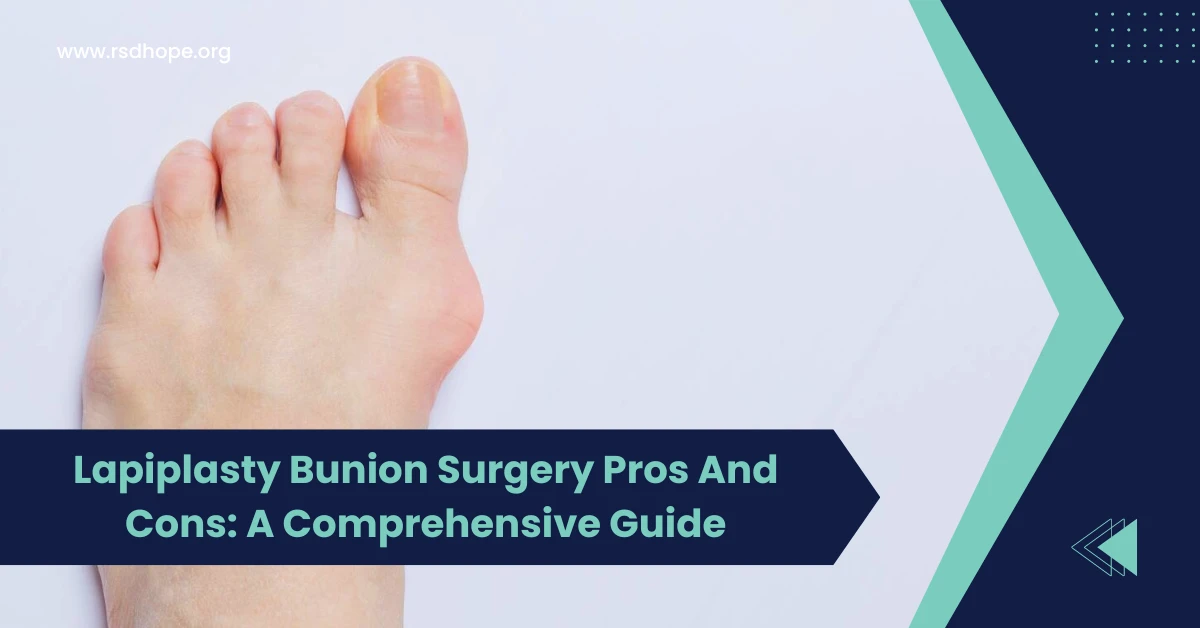A bunion is a bony bump that forms at the base of the big toe, causing pain and difficulty wearing shoes. Bunions can significantly impact daily life, making simple tasks like walking or standing uncomfortable. Lapiplasty Bunion Surgery is a modern approach to treating bunions, offering a more comprehensive solution than traditional methods.
Key Takeaways
- Lapiplasty Bunion Surgery is a modern technique that addresses the root cause of bunions.
- This procedure offers faster recovery, less pain, and a lower risk of bunion recurrence compared to traditional methods.
- While Lapiplasty has many advantages, it may not be suitable for everyone, and it’s essential to consult a healthcare professional.
What is Lapiplasty Bunion Surgery?
Lapiplasty is a surgical procedure that corrects bunions by addressing the root cause of the deformity. Unlike traditional bunion surgery, which focuses on removing the bony bump, Lapiplasty realigns the metatarsal bone, which is the bone that connects to the big toe. By correcting the alignment of the metatarsal bone, Lapiplasty helps restore the natural anatomy of the foot, reducing the risk of bunion recurrence.
Also Read: How To Speed Up Nerve Regeneration After Prostate Surgery? Accelerate Your Healing
How Lapiplasty Differ from Traditional Bunion Surgery?
Traditional bunion surgery often involves shaving off the bony bump and repositioning the soft tissues around the big toe. While this approach can provide temporary relief, it doesn’t address the underlying misalignment of the metatarsal bone, which can lead to bunion recurrence. Lapiplasty, on the other hand, corrects the alignment of the metatarsal bone, providing a more comprehensive solution to bunions.
Lapiplasty Bunion Surgery Pros and Cons
Pros:
- Faster recovery time compared to traditional bunion surgery
- Less pain during recovery
- Lower risk of bunion recurrence
- Improved cosmetic appearance of the foot
- Better long-term outcomes
Cons:
- Longer surgery time compared to traditional methods
- Higher cost than traditional bunion surgery
- Potential for complications, such as infection or nerve damage
- Not suitable for all patients
Who is not a candidate for Lapiplasty?
While Lapiplasty can be an effective treatment for many people with bunions, it may not be suitable for everyone. Factors that may disqualify a patient from undergoing Lapiplasty include:
- Severe arthritis in the big toe joint
- Significant instability or hypermobility in the foot
- Certain neurological conditions that affect foot sensation
- Poor circulation or healing potential
In these cases, alternative treatment options, such as traditional bunion surgery or non-surgical management, may be more appropriate. It’s essential to consult with a healthcare professional to determine the best course of action for your individual needs.
Preparing for Lapiplasty Foot Surgery and Recovery
Before undergoing Lapiplasty surgery, your healthcare provider will give you pre-operative instructions, which may include stopping certain medications, fasting before the procedure, and arranging for transportation home after surgery. On the day of the surgery, you’ll be given anesthesia to ensure comfort during the procedure.
After the surgery, you’ll need to follow post-operative care instructions, which may include keeping the foot elevated, applying ice, and taking pain medication as prescribed. You may also need to wear a special surgical boot or cast to protect the foot during healing. Physical therapy and rehabilitation exercises will be essential to help you regain strength and mobility in the foot.
Conclusion
Lapiplasty Bunion Surgery is a modern approach to treating bunions that offers many advantages over traditional methods. By addressing the root cause of bunions and realigning the metatarsal bone, Lapiplasty can provide faster recovery, less pain, and a lower risk of bunion recurrence. However, it’s essential to note that Lapiplasty may not be suitable for everyone, and it’s crucial to consult with a healthcare professional to determine if it’s the right treatment option for your specific case.
Read More: Natural Remedies For Dissolving Bone Spurs: A Guide to Pain Relief
FAQs
A: Recovery time varies, but most patients can return to normal activities within 6-8 weeks.
A: Coverage varies by insurance plan, so it’s best to check with your provider.
A: The procedure typically takes about an hour, but this can vary based on the complexity of the case.
A: As with any surgery, there are risks, including infection, nerve damage, and complications from anesthesia. However, these risks are generally low, and your healthcare provider will discuss them with you before the procedure.
References:
https://www.health.harvard.edu/diseases-and-conditions/what-to-do-about-bunions

